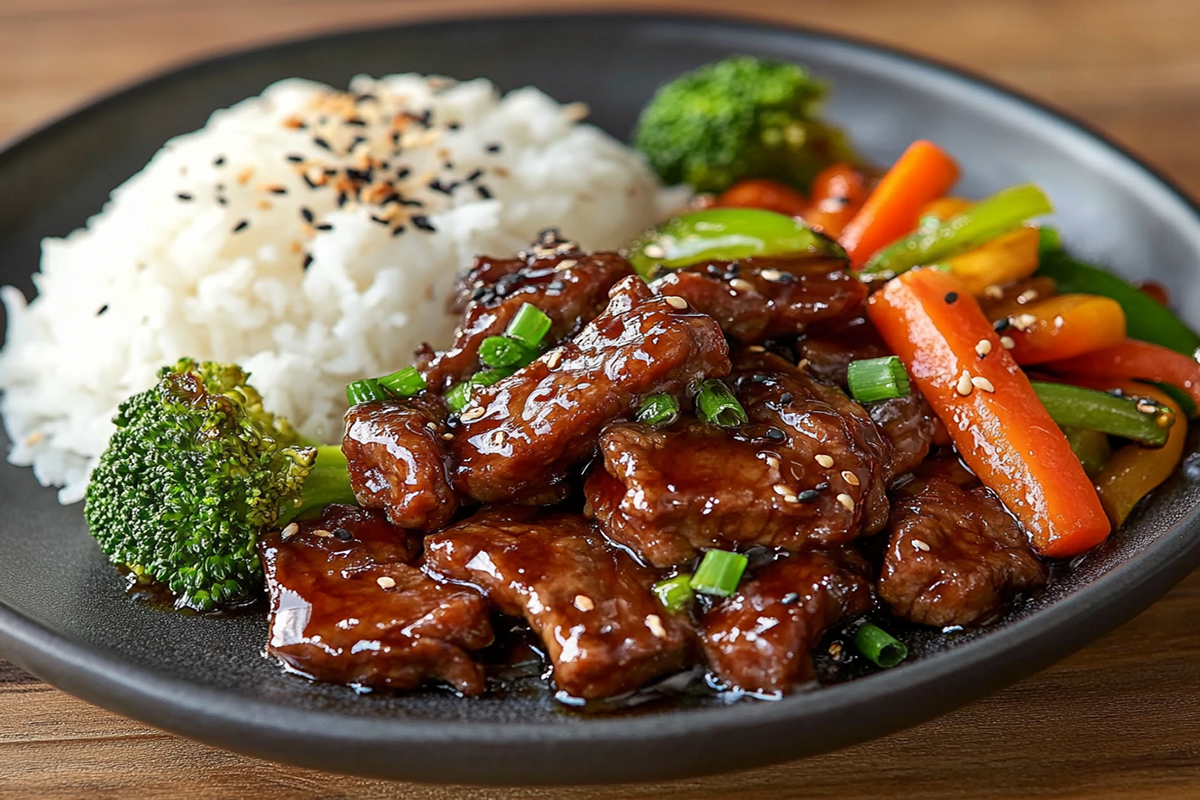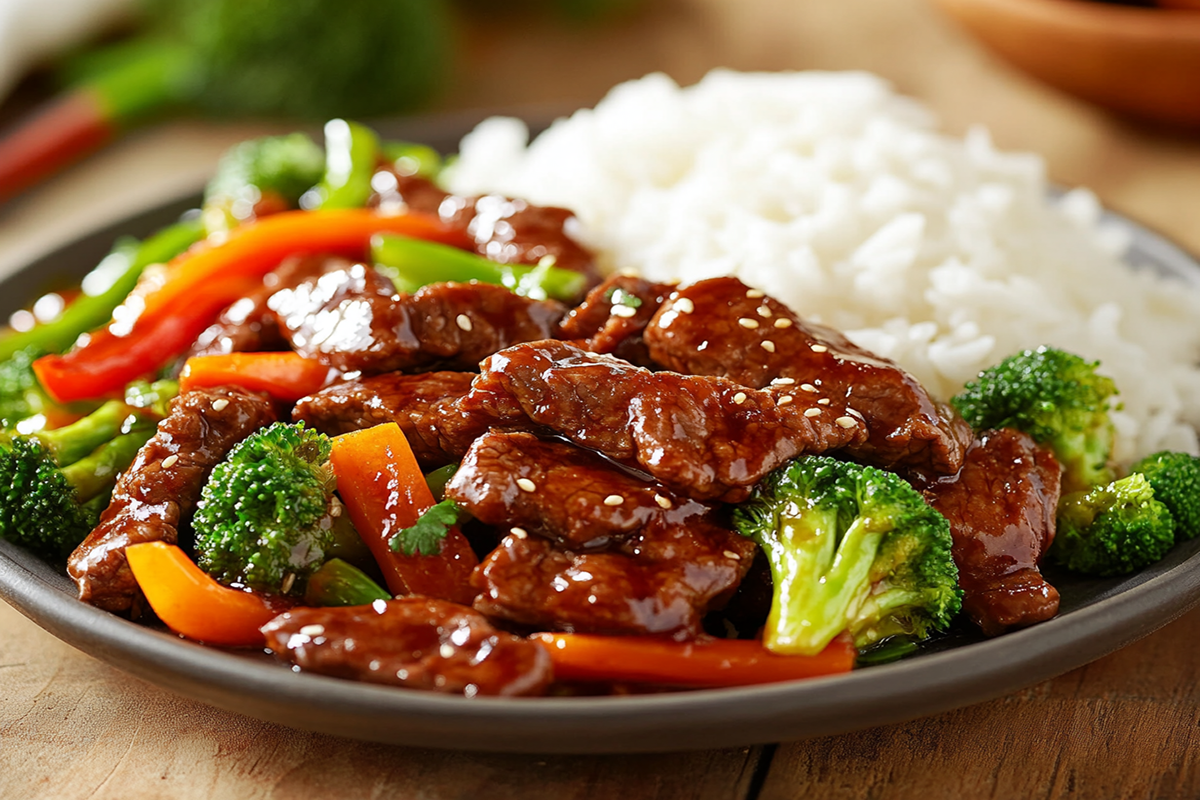Mongolian beef is a popular Chinese-American dish that combines tender slices of beef with a flavorful soy-based sauce. It’s rich, savory, and slightly sweet, offering an exciting balance of flavors that make it a favorite among many. When it comes to choosing what to eat with Mongolian beef, the right sides can elevate the dish, complementing its textures and enhancing its flavors. For more inspiration, you might want to try Mongolian Ground Beef Noodles, a flavorful twist on the classic . In this article, we’ll explore the best side dishes for Mongolian beef, from classic pairings like rice to more creative options. We’ll also answer frequently asked questions to ensure your meal is a success.
The Importance of Pairing the Right Sides
Choosing the right side dishes for Mongolian beef is key to creating a balanced meal. The richness of the beef pairs well with neutral or mildly flavored sides, allowing the savory sauce to shine. At the same time, you can experiment with textures, adding crunch or freshness to complement the tender beef.
For a complete meal, it’s common to pair Mongolian beef with steamed white rice, but there are many alternatives to explore. These sides not only soak up the flavorful sauce but also balance the meal’s richness. Let’s dive into the best options, ensuring you have a variety of choices for every palate.
Best Traditional Sides to Pair with Mongolian Beef
Steamed White Rice
Steamed white rice is the classic choice when considering what do you eat with Mongolian beef. Its neutral flavor provides the perfect backdrop for the rich, flavorful sauce. The mild taste and soft texture of the rice help balance the sweet and salty elements of the dish, making it a staple side. You can also opt for jasmine or basmati rice for a fragrant twist.
Brown Rice
For those wondering what do you eat with Mongolian beef, brown rice is a great substitute for white rice. Brown rice has a slightly nutty flavor and a chewier texture, which adds a new dimension to the meal. It’s also packed with fiber and nutrients, making it a more nutritious alternative. Like white rice, brown rice absorbs the savory sauce beautifully, ensuring every bite is flavorful.
Fried Rice
If you’re looking to add a bit more complexity to your meal, fried rice is an excellent choice. Fried rice can be made with vegetables, eggs, and seasonings, making it an ideal side when deciding what to eat with Mongolian beef for added depth and texture. The lightly crispy rice grains and the inclusion of vegetables provide a contrast to the tender beef. Egg-fried rice is particularly popular, as the richness of the egg pairs well with the sweet-savory Mongolian beef sauce.
In fact, you can also try vegetable fried rice if you want to boost your meal’s nutritional value while keeping it light and filling. Adding fresh vegetables like peas, carrots, and bell peppers to your fried rice provides additional flavors that blend well with the sauce from Mongolian beef.
Noodles as a Base
Lo Mein
Lo mein noodles are a soft, chewy option that works beautifully with Mongolian beef. Furthermore, the sauce from the beef clings to the noodles, creating a harmonious blend of flavors. In addition, lo mein is often stir-fried with vegetables like carrots, bell peppers, and onions, adding even more layers to the dish. Finally, the noodles’ texture complements the tenderness of the beef, making it a satisfying pairing.
Chow Mein
For those who prefer a bit of crunch, chow mein is the perfect option. Chow mein noodles are stir-fried until crispy, offering a delightful contrast to the soft beef. Whether you opt for soft or crispy chow mein, this noodle dish provides a delicious base that soaks up the savory sauce without becoming too heavy.
Rice Noodles
Rice noodles are a great gluten-free alternative to traditional wheat-based noodles. They have a light texture and neutral flavor, allowing the Mongolian beef’s bold sauce to take center stage. Rice noodles are particularly popular in Asian cuisine and work well with stir-fried vegetables and light sauces.
Rice noodles are also a fantastic option for those who want a lighter meal that doesn’t compromise on flavor. They absorb the rich sauce well while maintaining a delicate texture that complements the beef.
Vegetable Sides for Mongolian Beef
Stir-Fried Vegetables
Adding stir-fried vegetables to your meal is a fantastic way to add freshness and texture. Popular options include broccoli, carrots, snap peas, and bell peppers. These vegetables are quick to prepare and add vibrant color to your plate. The slight crunch of the stir-fried veggies contrasts well with the tender beef, creating a balanced meal.
For a healthy stir-fry recipe that pairs well with Mongolian beef, you can find more information on 21 Best Side Dishes for Mongolian Beef.
Steamed Vegetables
For a lighter, healthier side dish, steamed vegetables are an excellent choice. Steamed broccoli, bok choy, or asparagus work particularly well. Steaming the vegetables allows them to retain their nutrients and bright colors, while their mild flavors complement the rich sauce of Mongolian beef.
Steamed vegetables also allow the Mongolian beef to shine as the star of the meal, providing a simple yet nutritious side option that doesn’t overpower the main dish.
Garlic Green Beans
Garlic green beans are a popular choice to serve with Mongolian beef. The crispy texture of stir-fried green beans, combined with the aromatic flavor of garlic, adds a fresh, vibrant contrast to the meal. This side dish is easy to prepare and offers a healthy, crunchy addition to your plate.
Adding a bit of sesame oil to garlic green beans can enhance their flavor and bring an authentic Asian-inspired touch to your Mongolian beef dinner.
Bread and Wrap Options
Lettuce Wraps
Lettuce wraps offer a refreshing, low-carb alternative to heavier sides like rice or noodles. Crisp lettuce leaves act as the perfect vessel for Mongolian beef, adding a cool crunch that balances the rich sauce. Lettuce wraps are also great for a light lunch or appetizer, making the meal feel fresh and vibrant.
Flatbread
Flatbread might not be the first thing that comes to mind when thinking about Mongolian beef, but it works surprisingly well. The soft, slightly chewy texture of the bread absorbs the sauce and provides a neutral base for the rich flavors. Whether you use naan, pita, or a simple flatbread, this side can elevate your meal.
Bao Buns
Bao buns are a Chinese steamed bread that pairs excellently with Mongolian beef. Their soft, pillowy texture contrasts with the tender beef and crispy vegetables, creating a delightful combination of textures and flavors. You can stuff the bao buns with Mongolian beef for a fun and creative way to serve this dish.
Healthier and Low-Carb Alternatives
Cauliflower Rice
Cauliflower rice is a fantastic low-carb substitute for traditional rice. It’s light, easy to prepare, and absorbs the savory sauce just like regular rice. Cauliflower rice adds a subtle nuttiness to the dish while keeping the meal low in calories and carbohydrates.
Zucchini Noodles (Zoodles)
Zoodles, or zucchini noodles, are another low-carb option that works well with Mongolian beef. Their mild flavor and light texture make them a perfect vessel for the rich sauce. Zoodles are also gluten-free, making them ideal for those with dietary restrictions.
Quinoa
Quinoa is a protein-packed alternative to rice and noodles. Its fluffy texture and nutty flavor complement the Mongolian beef, making it a healthy and filling side dish. Quinoa is also rich in fiber and nutrients, adding extra health benefits to your meal.
Drinks and Condiments to Pair with Mongolian Beef
Drinks to Serve with Mongolian Beef
When it comes to drinks, green tea or jasmine tea are popular choices that complement the rich flavors of Mongolian beef. The light, slightly astringent quality of tea helps cleanse the palate between bites, ensuring the meal doesn’t feel too heavy.
If you’re looking for something cold, iced tea or lemonade are excellent options. The acidity of lemonade contrasts beautifully with the sweet and savory elements of the dish, while iced tea offers a refreshing balance.
Best Condiments to Serve
Soy sauce and sriracha are common condiments that can add more depth and heat to your Mongolian beef. A small drizzle of soy sauce can enhance the umami flavors, while sriracha brings a spicy kick.
Hoisin sauce is another great option. This thick, sweet sauce can be used as a dipping sauce or added to the dish for an extra layer of flavor.
FAQs
What Vegetables Go Best with Mongolian Beef?
Broccoli, snap peas, bell peppers, and carrots are all excellent vegetables to pair with Mongolian beef. In fact, these vegetables are often stir-fried to retain a bit of crunch, which contrasts nicely with the tender beef. Additionally, their vibrant colors and flavors enhance the overall presentation and taste of the dish.
Can I Eat Mongolian Beef with Noodles Instead of Rice?
Yes! Lo mein, chow mein, and rice noodles are all fantastic alternatives to rice. Noodles absorb the sauce well and add a different texture to the meal.
Is Mongolian Beef Gluten-Free?
Traditional Mongolian beef is not gluten-free due to the use of soy sauce. However, you can substitute regular soy sauce with tamari or a gluten-free soy sauce to make the dish suitable for those with gluten sensitivities.
What Drinks Pair Well with Mongolian Beef?
Green tea, jasmine tea, iced tea, and lemonade are popular drinks that complement Mongolian beef. Their light and refreshing qualities balance the richness of the dish.
Conclusion: Creating the Perfect Meal with Mongolian Beef
In conclusion, there are many delicious side dishes to pair with Mongolian beef. From classic steamed rice and stir-fried vegetables to creative options like lettuce wraps and zoodles, the possibilities are endless. Whether you’re looking for something traditional or experimenting with healthier alternatives, the right side can enhance the flavors and textures of this beloved dish. Try different combinations to find your favorite, and enjoy a perfectly balanced meal every time.
For more information on Mongolian beef, you can read the full article on Wikipedia.



